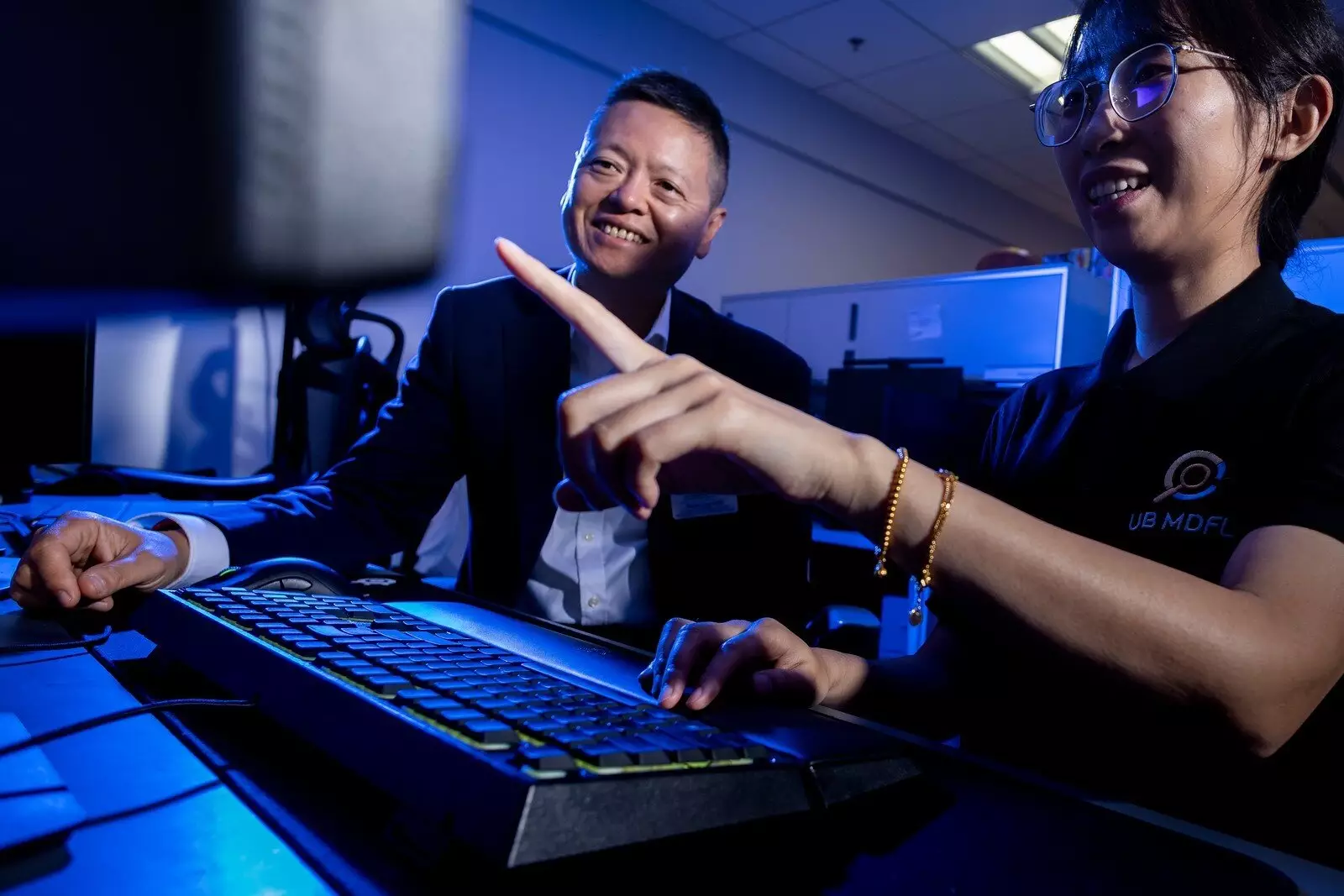In an age where digital content spreads like wildfire, it becomes increasingly critical to discern genuine media from intricately crafted forgeries. One of the significant challenges in this landscape is the proliferation of misleading information through deepfakes—realistic manipulations of audio, video, and images powered by advancing artificial intelligence. To combat this issue, researchers and innovators are joining forces to empower the general public with tools that facilitate the identification and analysis of potentially deceptive media. One initiative leading this charge is the DeepFake-o-Meter, developed by a dynamic team at the University at Buffalo.
Bridging the Chasm: The Need for Accessibility in Deepfake Detection
Despite the increasing sophistication of deepfakes, the arsenal for detecting them has only recently begun to expand beyond elite research circles. Siwei Lyu, a prominent figure in this field, emphasizes the limitations faced by journalists, social media users, and law enforcement in analyzing these manipulative works. They frequently rely on experts like Lyu for rapid evaluations, highlighting a disconnect between the researchers’ toolkit and the public’s need for swift, reliable analyses. This realization shaped the conception of the DeepFake-o-Meter—a tool designed to democratize access to deepfake detection capabilities.
The primary motivation behind developing the DeepFake-o-Meter stems from the understanding that time is often of the essence in verifying suspicious content. Stakes can be high—misleading videos that reach viral status can sway public opinion, incite panic, or even affect political outcomes. The urgency for a tool that provides immediate insights is paramount. Simple tasks like uploading a file and obtaining rapid results can empower users to make informed decisions in moments of uncertainty.
The Mechanics of Truth: How DeepFake-o-Meter Works
Central to the DeepFake-o-Meter’s function is its user-friendly interface that allows individuals to drag and drop media files with ease. This straightforward process belies the sophisticated technology working behind the scenes. Employing several advanced detection algorithms, the platform analyzes media files based on various metrics such as accuracy, processing speed, and algorithmic history. This holistic approach results in a percentage indicating the likelihood of a given piece being AI-generated, providing clarity to users seeking truth amid uncertainty.
The research underpinning this initiative leans heavily on transparency and openness—a refreshing difference from competing detection tools that often operate as black boxes. As noted by Lyu, users can access the underlying code for the algorithms, allowing the broader research community to scrutinize and contribute. This collaborative ethos invites innovation while building trust, essential in an era where skepticism abounds regarding digital information.
Amidst its theoretical underpinnings, the DeepFake-o-Meter has proven itself effective in real-world scenarios. Various media outlets have utilized the platform to authenticate dubious content, providing case studies in the practical efficacy of AI-driven detection methodologies. For instance, analyses of a fabricated robocall from U.S. President Joe Biden exhibited the DeepFake-o-Meter’s precision, underscoring its capability to discern authenticity in a complex media landscape.
What sets this tool apart is not merely its accuracy but its commitment to fostering a collaborative environment. Users are encouraged to share their uploaded content with researchers, which allows the algorithms to evolve based on actual cases encountered in the wild. Lyu emphasizes the importance of continuous learning for these detection tools; only through consistent engagement with the latest trends in deepfake creation can the algorithms hope to remain relevant.
While the technological capabilities of the DeepFake-o-Meter are impressive, Lyu stresses the indispensable role of human insight in the verification process. Algorithms excel at detecting manipulations beyond human perception; however, they lack the nuanced understanding of context and intention that only humans possess. Therefore, fostering a community—a “marketplace for deepfake bounty hunters,” as Lyu suggests—could play a crucial role in bolstering detection efforts.
The goal is to create a knowledgeable community of users poised to support one another in identifying and contextualizing AI-generated content. This symbiotic relationship between human insight and algorithmic capacity represents a comprehensive approach to media integrity, reflecting hope for a future where the digital landscape can be navigated with caution and discernment.
The emergence of tools like the DeepFake-o-Meter demonstrates a proactive response to the complexities of combating digital deception. By making advanced analytical capabilities accessible to all, the initiative embodies a crucial step toward ensuring that the public remains informed and vigilant in the face of misinformation. As the landscape continues to evolve, fostering collaboration between technology and human discernment will be paramount, serving as the foundation for fostering trust in an increasingly complex media landscape.


Leave a Reply